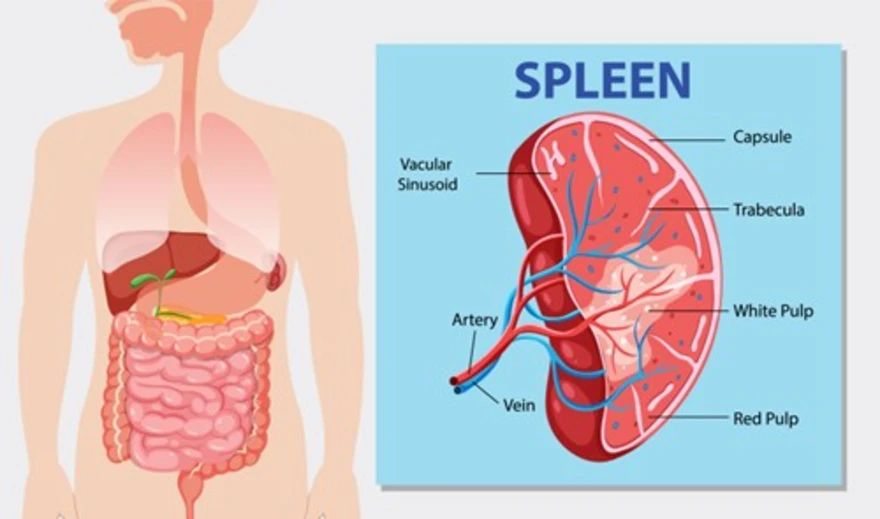Preventive Healthcare
5 Effective Ways to Reduce Lactic Acid Build-Up After Exercise

Table of Contents
- What is lactic acid?
- What does lactic acid do?
- Key functions of lactic acid
- Does lactic acid cause soreness?
- Where is lactic acid found in the body?
- High lactic acid levels
- Lactic acid level test
- Lactate threshold testing for athletes
- 5 effective ways to reduce lactic acid
- Bonus tips
- Conclusion
- FAQs
Intense exercise often leads to the accumulation of lactic acid in the muscles, causing fatigue, a burning sensation, and decreased performance. As an athlete or fitness enthusiast, understanding how to effectively reduce lactic acid build-up is crucial for optimising your workouts and achieving your goals. In this article, we'll explore the 5 proven strategies to minimise the impact of lactic acid muscle pain on your body.
What is lactic acid?
Lactic acid, also known as lactate, is produced when the body breaks down glucose for energy in the absence of sufficient oxygen. This process, called anaerobic glycolysis, occurs during high-intensity activities such as sprinting or weightlifting, where the oxygen supply cannot keep up with the energy demand. As a result, lactic acid accumulates in the muscles, leading to the familiar burning sensation and fatigue.
What does lactic acid do?
While often associated with muscle fatigue, lactic acid plays a crucial role in exercise performance and recovery. During intense activity, lactate helps to delay fatigue by providing an alternative energy source for the muscles. Additionally, it acts as a signalling molecule, triggering adaptive responses that improve muscle function and endurance over time.
However, excessive lactic acid accumulation can hinder performance by increasing muscle acidity and impairing muscle contraction. This is why understanding how to reduce lactic acid build-up is essential for athletes and fitness enthusiasts looking to push their limits and recover effectively.
Key functions of lactic acid
Lactic acid serves several important functions in the body:
- Energy source: Lactate can be used as fuel by the muscles, heart, and brain during exercise.
- Fatigue delay: By providing an alternative energy pathway, lactate helps delay the onset of fatigue during high-intensity activities.
- Adaptive signalling: Lactic acid stimulates the release of growth factors and hormones that promote muscle adaptation and recovery.
- Indicator of effort: Lactate levels reflect the intensity of exercise, helping athletes monitor their training and progress.
Does lactic acid cause soreness?
A popular misconception is that lactic acid muscle pain and soreness are common. However, research has shown that lactic acid is not responsible for delayed onset muscle soreness (DOMS). DOMS typically occurs 24-48 hours after intense exercise and is caused by micro-tears in the muscle fibres and the subsequent inflammatory response.
While lactic acid can contribute to the burning sensation and fatigue during exercise, it is quickly cleared from the muscles within an hour after the activity. Therefore, the soreness experienced in the days following a workout is not directly related to lactic acid accumulation.
Where is lactic acid found in the body?
During intense exercise, lactic acid is primarily produced and accumulates in the muscles. However, it is not limited to the muscles alone. Lactic acid is also produced by other tissues, such as the liver, and can be found in the bloodstream. After exercise, the body works to clear lactic acid from the muscles and blood, typically within an hour.
High lactic acid levels
Elevated lactic acid levels, known as hyperlactatemia, can occur during intense exercise when the rate of lactate production exceeds the body's ability to clear it. This leads to increased muscle acidity, which can impair muscle function and contribute to fatigue.
Factors that influence lactic acid accumulation include:
- Exercise intensity and duration
- Muscle fiber type composition
- Training status and fitness level
- Nutritional status and glycogen availability
While some lactic acid build-up is normal during exercise, excessive accumulation can hinder performance. This is where strategies to reduce lactate levels become crucial.
Lactic acid level test
In clinical settings, lactic acid tests may be used to diagnose and monitor certain medical conditions, such as lactic acidosis. These tests involve measuring the concentration of lactic acid in the blood. However, for healthy athletes, routine lactic acid level tests are not typically necessary unless there are specific health concerns or performance issues.
Athletes may undergo lactate threshold testing, which helps determine the point at which lactic acid starts to accumulate rapidly in the blood during exercise. This lactic acid in athletes information can be used to optimise training programs and improve endurance performance.
Lactate threshold testing for athletes
Lactate threshold testing is a valuable tool for athletes looking to enhance their endurance and performance. The test involves measuring blood lactate levels at various exercise intensities to determine the point at which lactic acid begins to accumulate significantly.
By identifying an athlete's lactate threshold, coaches and trainers can tailor training programs to improve the body's ability to clear lactic acid and delay the onset of fatigue. This allows athletes to maintain higher intensities for longer periods, ultimately leading to improved performance in endurance events.
Lactate threshold testing is commonly used in sports such as running, cycling, and swimming, where sustained efforts are crucial. The test results can help athletes optimise their training zones, ensuring they are working at the right intensity to maximise adaptations and minimise the risk of overtraining.
5 effective ways to reduce lactic acid
Now that we understand the role of lactic acid in exercise, you might be wondering how to reduce lactic acid? Let's explore 5 strategies to reduce its build-up and optimise recovery.
1. Stay hydrated
Proper hydration is essential for maintaining optimal body function during exercise and facilitating lactic acid clearance. When you're well-hydrated, your blood volume is maintained, allowing for efficient circulation and delivery of oxygen to the muscles.
Tips for staying hydrated:
- Drink water consistently throughout the day
- Consume fluids before, during, and after exercise
- Monitor your urine color – aim for a light yellow color
- Consider electrolyte drinks for intense or prolonged activities
Adequate hydration helps flush out metabolic waste products, including lactic acid, and promotes muscle recovery.
2. Practice active recovery
Engaging in low-intensity activities after a high-intensity workout can help reduce lactic acid levels more effectively than passive rest. Active recovery promotes blood flow to the muscles, aiding in lactate clearance and oxygenation.
Examples of active recovery:
- Light jogging or cycling
- Swimming or aquatic exercises
- Yoga or gentle stretching
- Walking or hiking
By maintaining a low level of activity, you encourage your body to utilise lactic acid as an energy source, speeding up its removal from the muscles.
3. Stretch and foam roll
Incorporating stretching and foam rolling into your post-exercise routine can help alleviate muscle tension, improve circulation, and promote lactic acid reduction. Stretching helps to elongate the muscles, increasing blood flow and facilitating the removal of metabolic waste products.
Foam rolling, or self-myofascial release, involves using a foam roller to apply pressure to specific muscle groups. This technique can help break up adhesions, reduce muscle soreness, and improve flexibility.
Tips for stretching and foam rolling:
- Focus on the major muscle groups used during your workout
- Hold each stretch for 15-30 seconds, breathing deeply
- Use a foam roller to target tight or sore areas, applying gentle pressure
- Avoid rolling over joints or bony prominences
Regular stretching and foam rolling can help optimise muscle recovery and reduce lactic acid build-up over time.
4. Eat a balanced post-workout meal
Proper nutrition plays a crucial role in managing lactic acid levels and supporting recovery after exercise. Consuming a balanced meal that includes carbohydrates and protein can help replenish energy stores, repair muscle tissue, and reduce muscle fatigue.
Carbohydrates are essential for restoring glycogen levels, which can become depleted during intense exercise. Consuming carbohydrate-rich foods such as fruits, whole grains, and starchy vegetables within 30-60 minutes after exercise can help replenish glycogen stores and reduce lactic acid build-up.
Protein is vital for muscle repair and rebuilding. Including a source of high-quality protein in your post-workout meal, such as lean meats, fish, eggs, or plant-based proteins, can support muscle recovery and reduce muscle soreness. Remember to stay hydrated by drinking water with your meal to further support recovery and lactic acid clearance.
5. Try deep breathing and proper cooldown
Deep breathing exercises and a proper cooldown routine can help restore normal oxygen levels in the body, reducing lactic acid accumulation and promoting recovery.
After your workout, take a few minutes to focus on deep, diaphragmatic breathing. This type of breathing involves inhaling deeply through the nose, allowing the belly to expand, and exhaling slowly through the mouth. Deep breathing helps oxygenate the blood, which can aid in lactic acid clearance and reduce muscle fatigue.
Incorporate a cooldown routine that gradually lowers your heart rate and helps your body transition from exercise to rest. This can include light jogging, walking, or gentle cycling for 5-10 minutes, followed by stretching.
A proper cooldown helps:
- Reduce lactic acid build-up
- Prevent blood pooling in the extremities
- Decrease muscle soreness
- Promote relaxation
By prioritising deep breathing and a gradual cooldown, you can support your body's natural recovery processes and minimise the impact of lactic acid on your muscles.
Bonus tips
In addition to the five strategies mentioned above, here are some bonus tips on how to get rid of lactic acid in muscles to optimise your recovery:
- Gradually increase exercise intensity: Allow your body time to adapt to new training demands by progressively increasing the intensity and duration of your workouts. This can help reduce the risk of excessive lactic acid accumulation.
- Incorporate rest days: Regular rest days are essential for recovery and preventing overtraining. Allow your body time to repair and rebuild muscle tissue, which can help reduce lactic acid build-up and improve overall performance.
- Maintain a balanced diet: Proper nutrition throughout the day, not just after exercise, is crucial for managing lactic acid levels. Ensure you're consuming a balanced diet rich in whole foods, including fruits, vegetables, lean proteins, and complex carbohydrates.
- Stay consistent with training: Consistent exercise helps improve your body's efficiency in utilising lactate as an energy source, reducing its accumulation over time.
By incorporating these bonus tips into your training and recovery routine, you can further support your body's ability to manage lactic acid and optimise your athletic performance.
Conclusion
Lactic acid build-up is a natural consequence of intense exercise, but it doesn't have to hinder your performance or recovery. By staying hydrated, practicing active recovery, stretching and foam rolling, eating a balanced post-workout meal, and incorporating deep breathing and a proper cooldown, you can effectively reduce lactic acid levels and enhance your overall athletic experience. If you have concerns about lactic acid levels or exercise recovery, consider consulting with a healthcare professional or sports medicine specialist.
At Metropolis Healthcare, we understand the importance of monitoring your health and optimising your fitness journey. Our state-of-the-art diagnostic services, including lactic acid test, can provide valuable insights into your body's response to exercise. With our convenient at-home sample collection and user-friendly online reporting, managing your health has never been easier.
FAQs
How do you flush lactic acid out of your body?
The body naturally clears lactic acid through increased blood flow and oxygenation. Engaging in light activity, deep breathing exercises, and staying hydrated can help facilitate this process.
What foods decrease lactic acid?
Foods rich in magnesium, such as leafy greens, nuts, and whole grains, may help reduce lactic acid levels. Adequate hydration and a balanced diet that supports muscle recovery are also essential.
What can I drink to flush lactic acid?
Water is the best choice for flushing lactic acid from the body. Staying well-hydrated before, during, and after exercise helps maintain blood volume and promotes lactate clearance.
How do you treat high lactic acid?
Treating high lactic acid levels involves reducing exercise intensity, allowing for rest and recovery, and engaging in low-intensity activities to promote lactate clearance. Consult a healthcare professional if symptoms persist.
Is lactic acid a birth control?
No,yo is not a form of birth control. It is a byproduct of anaerobic metabolism during exercise and does not have contraceptive properties.










































